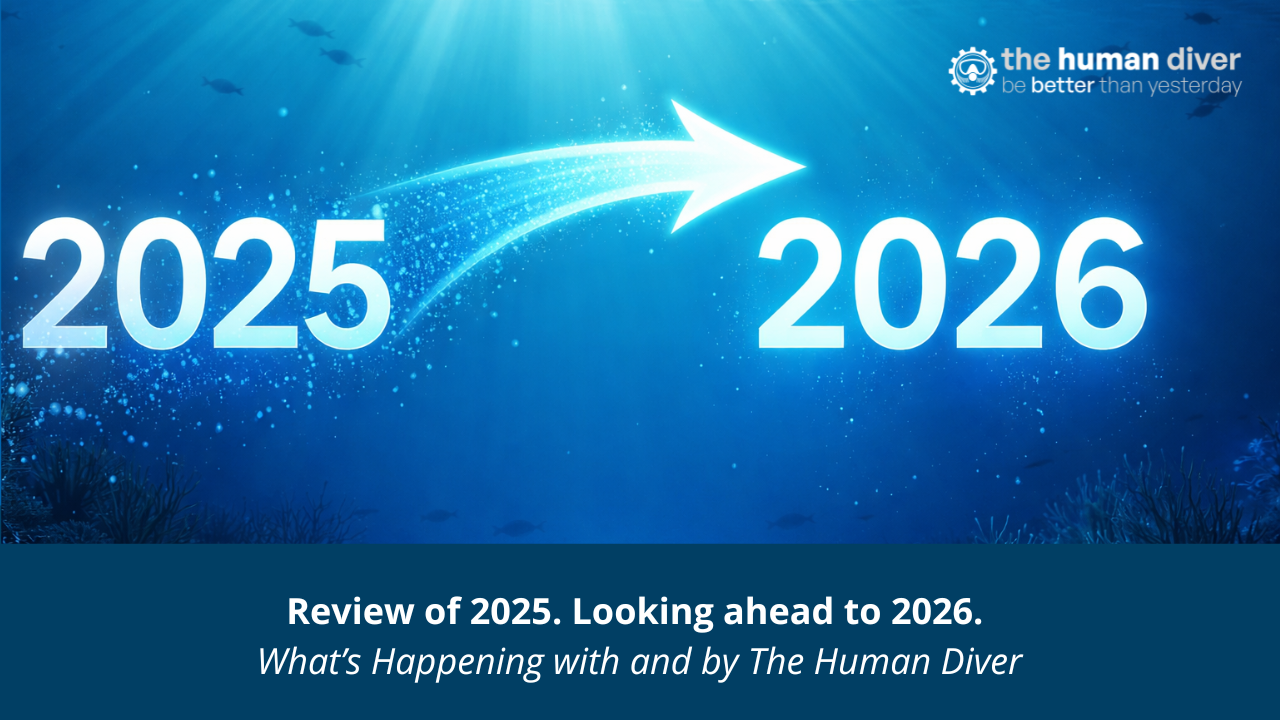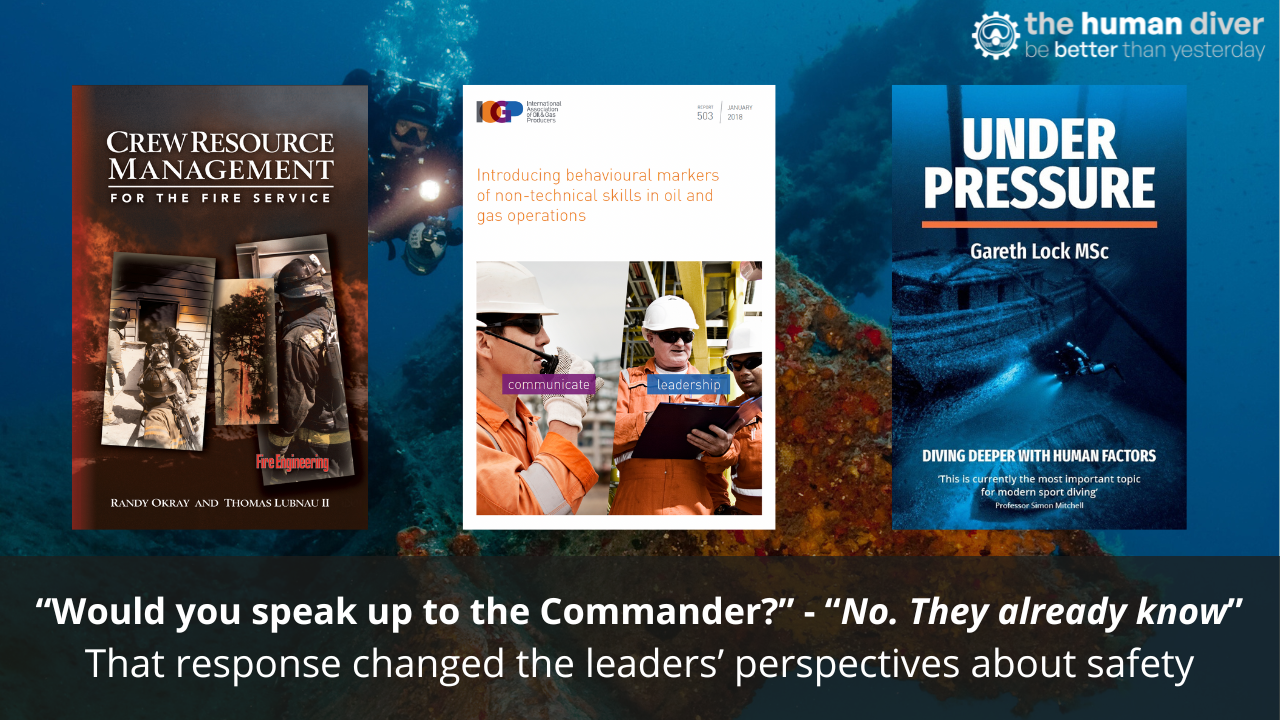
CCR pre-dive checks and checklists are not always enough to prevent an equipment-based accident!
Mar 09, 2020One of the key themes I teach is that safety is not necessarily the absence of accidents or incidents, but rather the presence of barriers and defences and the capacity of the system to fail safely. This quote comes from Todd Conklin, a researcher and practitioner working in the safety and human performance industry in the US. The idea is that we develop technical and non-technical skills and design the equipment, procedures and training and manage the environment so that risk is managed at an acceptable level. However, we can't design or manage everything beforehand, so we need to be able to handle those 'odd events' and then share the stories so that others may learn.

In rebreather diving, one of the best ways to ensure that the unit is safe to dive is to make sure that the build and final pre-dive checks are completed. However, even if this is done diligently on the surface including packing the scrubber and then executing the complete set of final checks, things can go wrong, like being 400m back in a cave when a CO2-induced event occurs. The only reason they survived was because of effective teamwork and high levels of situational awareness to understand that something wasn’t quite right and action was needed.
The following account is from Phil Short and relates to an instructor evaluation dive in a French cave system with three students and the instructor candidate. Phil was undertaking the assessment.
Initial setting
The rebreathers were built and tested on-site in accordance with both unit checklists and the agency pre-dive checks. The bailout stages were laid in the head pool of the cave prior to undertaking the pre-dive checks. The divers entered the water and moved to a point where the water was waist-deep to put on their fins. The head pool was static with no flow and some debris/detritus floating on the surface. All divers closed their CCR mouthpieces while undertaking these final checks which included putting their fins on. As the divers bent down, the mouthpieces dipped into the water, which is normal.
The subject diver (instructor intern) inserted their DSV into their mouth, exhaled to purge the water, opened the DSV to CCR mode and breathed normally, monitoring primary and second pO2 displays to confirm functionality. Once everyone was ok, the dive started.

The initial part of the dive
The divers descended to 30m, passed the entry elbow and then a slow ascent to a passage 20m, then 18m, then 15m, all the time swimming at around 10m per min. At P.300 (300m in), the subject diver felt slight tingling and gentle pins and needles feeling in their arms and hands, and breathing was normal (in their perception). The instructor intern bailed out to the OC regulator which was necklaced around their neck for two or three ‘sanity’ breaths, checked their displays and controls, and feeling better, went back onto the loop. The IT (swimming at the rear) noticed the bailout, swam over to the instructor and asked if everything was ok. The instructor intern replied ‘Ok’ and they carried on. They all carried on swimming at a relaxed 10m per min.
Incident
At P.400 (400m in), the instructor intern experienced a return of the localised pins and needles, but this time they also recognised an elevated breathing rate and discomfort in breathing. The diver bailout out for a second time and over a period of 6-10 breaths, the breathing rate started to recover and the diver felt improved. The IT noticed the second bailout, moved to the instructor intern and asked if all ok. The instructor intern replied yes, and the IT thumbed the dive, confirming this with the instructor intern and the three students. The IT also signalled that the instructor intern was to remain on OC for the exit.
During the controlled exit, one of the 300 bar 7-litre bailout cylinders was breathed down to 70 bar and the other remained full at 300 bar.
On exit, the instructor intern calculated their average breathing rate was 18-20 l/min compared to a normal 12 l/min.
For the next 2-3 days, the diver had a severe then lingering headache.
The instructor intern explained that at all times, he felt ok, but that something wasn’t quite right.
Analysis
Technical:
Post-dive, the CCR was disassembled and on inspection, the one-way check (inhale) valve (mushroom value) had a small piece of wood, like a sliver from a matchstick, wedged under the inhale valve holding it open. This must-have entered into the DSV while stages and fins were being put on whilst in the head pool otherwise the Mushroom/One Way Valve checks would not have passed. The level of hypercapnia was at a relatively low-level during the dive otherwise the breathing rate would not have returned to ‘normal’ as quickly as it did. However, had the IT not stepped in, it is likely the instructor intern would have carried on with the dive getting further into the cave and creating a situation which may not have ended so well. Don’t be fooled by outcome bias… Technical solutions like stocking hosiery over the mouthpiece can prevent the incursion of such debris but this has an impact on functionality, in this case, the work of breathing.
Debris: Photo from the day in question.

Images of a 'good' mushroom valve.
Non-Technical
Situational Awareness: Situational awareness was limited by the instructor intern because of the narcotic effects of CO2 but the IT could see the situation developing as there had been two ‘abnormal’ events. The instructor intern may have also felt mentally-focused, pressured, because of the students and completing their evaluation compared to being ‘more rational’ and having more awareness. Humans notice things when they are Dangerous, Interesting, Pleasurable or Important (DIPI). The IT’s experience recognised that this developing situation was interesting, potentially dangerous and therefore important and needed to be dealt with accordingly.
Communications: Communications was well executed when the IT took control and ensured that the communications loop was closed so that everyone exited. Direct communication to tell the instructor intern to stay on OC.
Decision-making: Decision-making, when you don’t have all the information, is difficult to complete reliably. Furthermore, CO2 is known as a narcotic and this which will reduce the clarity of thought. Often the victim is the worst person to make the critical decisions because they have an investment in continuing especially with an event like this. The IT made the executive decision. It is not known if the students had seen/noticed what was going on and their thought processes. However, authority gradient would have likely made it hard for the students to thumb the dive (see the blog ‘How Safe is Your Diving?’ on The Human Diver for more on this topic).
Teamwork: Teamwork is one of the critical non-technical skills here. I often get told that teamwork can’t help you when you are deep ocean diving and that you are all on your own. My counter to that is that effective team members can help spot a situation developing when individuals can’t, for whatever reason, be that cognitively challenged or having a physiological issue like narcosis, hypoxia or hypercapnia. Teams can help prevent adverse events as long as psychological safety is present, up to the challenger level. Teams can also help recover the situation when things start going wrong. They take the decision-making process away from the impacted individual, they provide additional resources (cognitive and physical) to help solve the problem. However, for teamwork to be effective, there needs to be a common set of standards and behaviours and goal. As the interdependent nature of the team increases, so does the need for higher levels of competence when it comes to task work.
Leadership: Effective leadership was demonstrated by the IT in terms of taking control of the situation and moving from a coaching and evaluation role to that of a directive leader as the situation dictated. Situational leadership, and the ability to move between different leadership styles, is essential in high-risk environments. Finally, both the IT and the instructor intern have shown leadership by sharing this event so others can learn.
Feedback & Debrief: The team discussed what they would do differently to prevent this from occurring again at the technical level. Their position was to conduct a 'risk assessment' of the environment and if there was a static head pool with the potential for debris or detritus, then to enter the water with their mask on and loop in their mouths. This is not always easy and there are always trade-offs between one risk and another.

These non-technical skills don’t exist in isolation. As Sully said following the ditching of the Airbus into the Hudson in 2009, "One way of looking at this might be that, for 42 years, I've been making small regular deposits in this bank of experience: education and training, and on January 15, the balance was sufficient so that I could make a very large withdrawal." Divers don’t dive enough to encounter all the failures that might happen and therefore sharing stories like this allow the community to learn what MIGHT happen and to have a chronic unease about what might happen. That doesn’t mean they need to be paranoid as there is only so much you can mitigate, but you can certainly help stack the odds in your favour if you start to include plans to fail safely in what you do.

Gareth Lock is the owner of The Human Diver, a niche company focused on educating and developing divers, instructors and related teams to be high-performing. If you'd like to deepen your diving experience, consider taking the online introduction course which will change your attitude towards diving because safety is your perception, visit the website.
Want to learn more about this article or have questions? Contact us.











